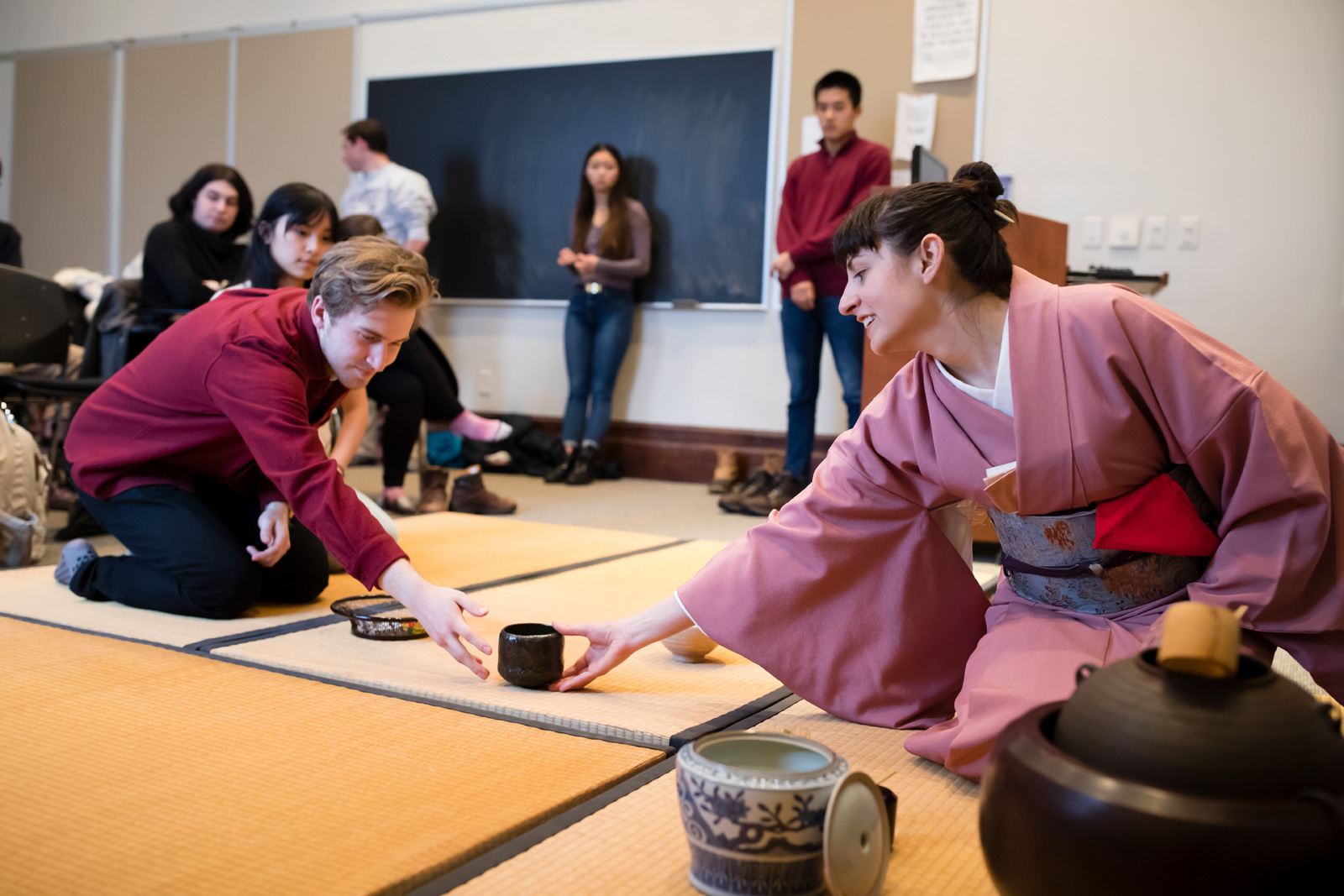
There’s a Japanese phrase—ichi-go ichi-e. “It means ‘one time, one meeting,’” explains Samuel Morse. “Every time you do a tea ceremony, it’s different.” Different occasions, different guests, different objects used, all of it charged with quiet reverence for how things are.
Morse is the Howard M. and Martha P. Mitchell Professor of the History of Art and Asian Languages and Civilizations. He is an expert on the chanoyu, or tea ceremony, from its 15th century origins to today. Morse collects and admires chanoyu implements, too, such as bamboo tea scoops, and tea-leaf jars known as natsume.
Some of these pieces appeared one drizzly, iron-sky day late last semester in Fayerweather 113. The stark weather was just right, actually. In the tea ceremony, wabi-sabi—the beauty of imperfection, impermanence and incompleteness—is the aspiration.
The students of Morse’s class “The Tea Ceremony and Japanese Culture” were here to present projects called toriawase, literally “taking and putting together,” like the arrangement of objects used for a particular tea event.
True, their objects were just images on slides, and their ceremonies were hypothetical. But today also brought the real deal: at the end of class, they watched a tea master perform the chanoyu as rain fell softly outside.
Kayla Balda ’18 began her toriawase first. She and her classmates had learned that each ceremony features perhaps a dozen articles, from the kettle to the wooden whisk used to stir the matcha (green tea powder) to displays of flowers or hanging scrolls.
Her imagined occasion was the winter solstice. She said she wanted to signal the transition from fall to winter, thus her simple vase containing one closed camellia, a winter flower. “Since it’s unbloomed,” she said, “that brings in the wabi-sabi.”
For his toriawase, Aaron Bushnell ’21 was bent on “the idea of conflict and change, like a peace after war.” His Oribe bowl was footed and imperfect: “I love it because it’s so grotesque and makes you feel uncomfortable.”
Tracy Chen ’20 professed herself a morning person who loves sunrises, and imagined a tea ceremony that ends at dawn. She chose a natsume jar made of mother-of-pearl “with iridescent gold flowers that look like the sun rising,” she said.
After more presentations, Sarah Klingenstein entered in a kimono. She trained at the Urasenke Midorikai center, Kyoto’s tea ceremony school for non-Japanese. She happened upon a tea ceremony when she was an angsty teenager, “and something about it instantly changed my life,” she told the class. “Every single gesture of this woman was so stunningly precise, so full of deliberateness. It was like I saw her soul extend all the way to the tips of her fingers.”
Klingenstein performed calmly, explaining as she went. She purified each utensil, folding the cloth that wiped the tea stick and bowls, retrieving fresh water from the kettle. She deftly whisked the matcha and steaming water into a vivid green froth.
As she handed one student after another a new bowl of tea, she asked them to observe before sipping. To note the vessel. The colors. The aroma. “That’s called haiken. It’s a humble word for looking at something.”
You could almost sense relaxation seep into the room, like smoke from a candle just blown out. While Klingenstein whisked and paused, wiped and refolded, poured and placed, the students listened as she spoke of the zen of the ritual.
“One of the most appealing things about the tea ceremony is I feel like I’m reclaiming my body and life from autopilot,” she told them. “It’s connoisseurship. It’s learning to notice. It’s very gradual—you give yourself over to the form, and the form shall set you free.”